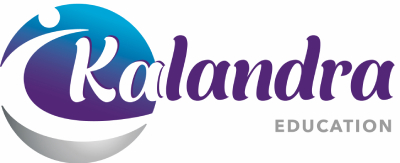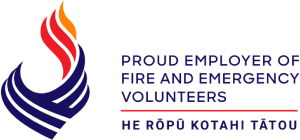Approximately 50,000 people in New Zealand are diagnosed with epilepsy. It’s a common and complex disease of the brain that affects 1 in 100 people. You can’t catch epilepsy. It has no age, gender, or ethnic preference. Symptoms are recurrent/unprovoked seizures. The causes may be genetic or as a result of brain trauma or severe illness.
Functioning of the brain is divided into categories:
Frontal Lobe: problem solving, emotional traits, reasoning (judgement) speaking, voluntary motor activity.
Temporal Lobe: understanding language, behaviour, memory, hearing.
Brain stem: breathing, body temperature, digestion, alertness/sleep, swallowing.
Parietal Lobe: knowing right from left, sensation, reading, body orientation
Occipital Lobe: vision, colour perception
Cerebellum: balance, co-ordination and control of voluntary movement, fine muscle control
The human brain contains around 86 billion neurons, these are the nerve cells that act as information superhighways, sending messages to the body through a series of electro-chemical transmitters. Everything that we think, feel and do is impossible without the work of neurons.
The three types of neurons are – sensory (taste/smell etc), motor (movement) and inter (all others).
Seizures are a result of a sudden, uncontrolled burst of electrical activity between neurons in the brain. It’s likened to an ‘electrical storm’ that results in changes in movement, behavioural, sensation, or consciousness depending on exactly where in the brain it occurs.
Different seizure types are:
Focal Onset seizures with Awareness happen when the abnormal activity is restricted to a small, focused area of the brain. The person is fully conscious and aware of their symptoms. Depending on where in the brain the activity occurs will result in different symptoms which may include:
Motor: involuntary jerking, twitching, shaking.
Sensory: tingling, numbness, pain, vision, hearing, smell, taste.
Psychic: fear, anxiety, emotions, hallucinations, recollections, déjà vu.
Autonomic: hot flushes, pallor, epigastric sensations, perspiration.
Focal Onset seizures with Impaired Awareness happen when the area affected is larger but still fairly focused. The person may have loss of awareness or consciousness is altered. They may appear drunk, high on drugs, sleep walking or in a trance. They will have an empty facial expression. Symptoms include automatisms, vocalizing, aimless wandering, lip smacking, repetitive actions, meaningless gestures, inappropriate actions, posturing. The after affects may include confusion, tiredness, headaches, and heightened emotions. Recovery is usually gradual.
A Generalised Onset Seizures happen when the abnormal electrical activity is across most of the brain. The different types of generalised seizures include absence, atonic, tonic, myoclonic and tonic clonic,
Absence Seizure includes brief loss of consciousness, short duration – up to 45 secs. This can be experienced hundreds of times a day. It may be accompanied by jerks of eyelids, head or arms, instant recovery, usually, childhood onset.
Tonic seizures is when a person will go stiff and lose consciousness, they will fall to the floor if standing, recovery is quick.
Atonic is similar to Tonic however the person will lose all tone in their muscles and flop to the floor. These used to be referred to as ‘drop attacks’
Myoclonic seizure is a singular jerk, often a person will have several clustered together. Recovery is quick
Tonic Clonic
Loss of consciousness, stiffening, falling (if standing). Breathing can be altered; skin can be pale with blueness around the mouth. It is followed by rhythmical muscle contractions – jerking, shaking. Breathing may be shallow or noisy, froth or saliva from mouth. This usually lasts 1 to 5 minutes. An individual may lose bladder or bowel control. Consciousness returns gradually. Confusion and tiredness usually follow.
Treatment for epilepsy is usually by anti-seizure medication, prescribed by a GP or neurologist.
Avoidance of triggers is important, triggers often include tiredness, stress, alcolhol na ddrug use and in some people flashing lights. It is important for a person with epilepsy to sleep and eat well, and manage stress. Other less common treatments include the Ketogenic diet (under strict medical supervision), Medical CBD oil (in some specific cases), Vagus Nerve Stimulation and surgery.
The Do’s of First Aid: Seizure should be timed. Check area for safety, protect head, stay with the person/reassure them, seek help, stable side.
For people in wheelchairs, apply brakes, keep seatbelt on, tilt chair (if it has a tilt function), support head/protect airway. After the jerking stops, carefully remove individual from chair and place in stable side position on a bed or floor.
First Aid – Don’t: Hold firm/try to stop seizure. Don’t put anything into the mouth or offer food/drink until fully conscious. For those in a wheelchair, don’t remove them from the chair, lift the wheels/tip the chair or restrain the person in any way, other than to maintain safety.
When to call an ambulance: if the seizure exceeds 5 minutes, a person is injured, or it is unknown if the person has epilepsy, another seizure quickly follows, the seizure occurs in water, a person is pregnant or has diabetes or if you are in doubt.
Epilepsy is easier to live with when you understand it.
Foremost, epilepsy is just a small part of a person’s life.
Catherine Wightman
Epilepsy NZ
June 2023
Back to Blog








